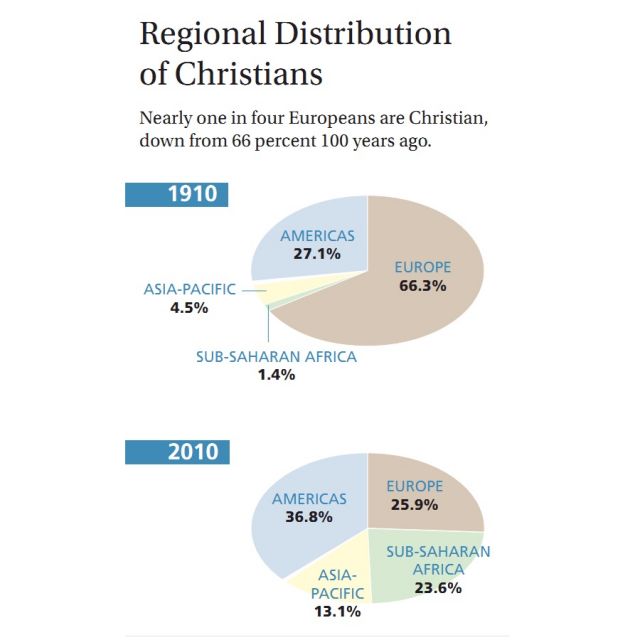The data indicates that during the past 100 years, the number of Christians around the world has more than tripled from historical estimates of approximately 600 million in 1910 to more than 2 billion today. But the world's overall population has also risen rapidly, from an estimated 1.8 billion in 1910 to 6.9 billion in 2010. As a result, Christians make up about the same portion of the world's population in 2010 (32 percent) as they did a century ago (35 percent).
The study also reveals that although Europe and the Americas are still home to a majority (63 percent) of the world's Christians, that share is much lower than it was in 1910 when it was 93 percent. In the past 100 years, the number of Christians grew significantly in sub-Saharan Africa and the Asia-Pacific region.
The study also breaks down where Catholics -- numbering 1.1 billion worldwide and half of the global Christian population -- reside.
Brazil, with 134 million Catholics, has the world's largest Catholic population, which totals more than the number of Catholics in Italy, France and Spain combined. Other countries with the highest percentages of Catholic populations include: Mexico, the Philippines and the United States. The 10 countries with the largest number of Catholics contain more than half of the world's Catholics.
The rest of the global Christian population breaks down to: Protestants 37 percent; Orthodox Christians 12 percent; other Christians such as Mormons and Jehovah's Witnesses 1percent.
Christians are by far the world's largest religious group. Muslims, the second-largest group, make up a little less than a quarter of the world's population, according to previous studies by the Pew Forum.
Although Christianity began in the Middle East-North Africa, that region today has both the lowest concentration of Christians -- about 4 percent -- and the smallest number of Christians (about 13 million) of any major geographic region.
The study provides data on the world's Christian population by region, country and tradition and is based on about 2,400 sources, including census figures and nationally representative population surveys. It is part of the Pew-Templeton Global Religious Futures project funded by the Pew Charitable Trusts and the John Templeton Foundation to analyze religious change and its impact on societies around the world.


